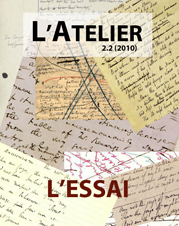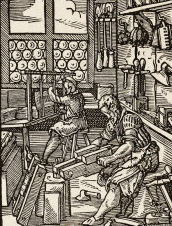Croquis à fleur de textes : les volumes de poésie de John William Waterhouse ou l’essai au cœur du dispositif texte/image
Résumé
L’œuvre de John William Waterhouse est intimement liée au mouvement préraphaélite, notamment dans sa prédilection pour les sujets littéraires. Or cet attachement au texte en vint au 20ème siècle, à la fin de la vie du peintre, à caractériser un art qui n’avait pas su prendre le tournant de la modernité picturale, libérée du sujet et du joug textuel. Les ébauches que nous nous proposons d’étudier frappent pourtant par la dynamique esthétique que le rapport de l’élément visuel au texte poétique semble créer. Au tournant du siècle, John William Waterhouse réalise en effet une série de croquis sur deux de ses volumes personnels de poésie, The Poetical Works of Percy Bysshe Shelley et The Works of Alfred Lord Tennyson. Considérer ces ébauches comme partie intégrante d’une œuvre texte/image, un « iconotexte » pour le dire comme Michael Nerlich, semble permettre de dépasser pour un temps la tension hiérarchique souvent sous-jacente dans la pensée de l’ut pictura poesis. Nous voudrions montrer comment c’est la forme particulière de l’essai qui révèle ici la puissance d’une imagination visuelle née des mots, dans ce volume illustré d’un nouveau genre où les ébauches de Waterhouse viennent jouer avec et sur les textes poétiques, entre célébration et irrévérence.
The art of John William Waterhouse is closely linked to the Pre-Raphaelite movement, in particular because of his taste for literary subjects. But in the 20th century, this affinity with the text came to characterize a form of art failing to enter pictorial modernity, freed from subjects and not submitted to the text. However, what strikes the spectator at once in the sketches we mean to study here is the aesthetic dynamics that the very link between visual components and poetical texts seem to create. At the turn of the century, John William Waterhouse draws a series of sketches directly on two of his own books of poetry, The Poetical Works of Percy Bysshe Shelley and The Works of Alfred Lord Tennyson. Considering these neglected sketches as part of a word and image whole, an “iconotext”, to use Michael Nerlich’s word, might allow us to overcome the hierarchical tension that often undermines the discourse of ut pictura poesis. This essay would like to show how it is the very specific form of the “essai” – both attempt and sketch – which reveals the power of the visual imagination born from words, as Waterhouse’s drawings play with the text, oscillating between celebration and irreverence in these unconventional illustrated volumes of poetry.
-
L’envoi spontané d’un article à la rédaction de L’Atelier implique l’autorisation de publication et la cession des droits dans les limites établies par la loi de propriété intellectuelle.
-
L’Atelier conserve les droits de reproduction des articles publiés, quelque soit le support : internet, CD ROM, réimpression, photocopie, etc.
-
L’auteur conserve le droit de publier ultérieurement son article déjà paru dans L’Atelier avec la seule obligation de mentionner le nom de la revue comme source de la première publication.





